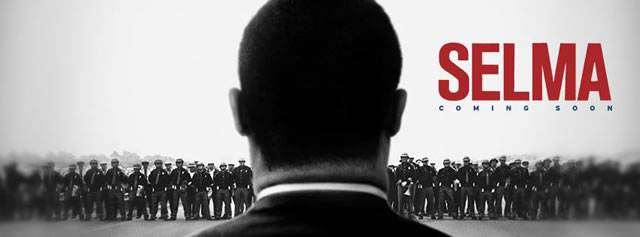By JAKOB HAND
COLUMNIST
Although it is best classified as a historical drama, “Selma” is a film about a debate we are still having in the United States. Focusing on the activities of Martin Luther King Jr., played brilliantly by David Oyelowo, “Selma” explores the events leading up to the famous Selma to Montgomery voting rights march. The woman who helmed the movie from behind the camera, Ava DuVernay, balanced the themes, characters, and events of “Selma” outstandingly. DuVernay sets the mood for each scene with effective realism and the aid of terrific writing from Paul Webb and excellent editing work. Although King is the most important character in the movie, “Selma” does more than tell the story of King, and it covers civil rights issues beyond equal access to voting.
“Selma” is a film about victims that come in many different shapes and sizes, and suffer abuse beyond denial of the right to vote or sit at a lunch counter. “Selma” breaks away from the flashy story of King to show Annie Lee Cooper, a woman who is blocked from registering to vote, to show four little girls murdered by a bomber while at church, to follow Jimmie Lee Jackson, a young man who is killed while sheltering his mother and grandfather from the police. It shows Viola Liuzzo and James Reeb, two volunteers murdered for aiding in the organization of the Selma to Montgomery march. There are few limitations on the range of American victims portrayed in “Selma.”
“Selma” does not just display passive victimhood, however. “Selma” is also about activists, leaders working to change the institutions and cultures that marginalized and attacked them. King is never alone in the film, although his speeches stand alone in the emotional spotlight. Instead, King spends most of his time away from the podium, in living rooms and meeting halls working with scores of dedicated and resourceful community leaders to develop a successful political strategy to achieve their goals as a group. King is shown using not just his ability to emotionally appeal to a crowd with this skills as a reverend and speaker, but as a man with a PhD. who can reason and view problems logically. Andrew Young, John Lewis, and Coretta Scott King are just a few of the other prominent leaders also explored throughout the movie: people who also had big ideas and on whom King frequently depended. “Selma” follows many people, and like King most of them are there because they would not be victims, but would be citizens in a better community and country. It is the range of characters and the agency in their portrayal that makes “Selma” an effective film.
The final component of “Selma” is the relationship between Lyndon Johnson and both King and George Wallace, the then governor of Alabama. Although Johnson was ideologically supportive of King and his goals, the film also shows Johnson as a president, someone who behaved differently from activists. Johnson is shown as a man with multiple agendas, a man with a complicated legacy to establish and a difficult path towards creating it. He did not often want to prioritize race as a political issue, and he and King each worked hard to pressure the other to see each other’s perspective on political matters. “Selma” excellently provided insight into the effort it took for King to force Johnson to accept each new step towards racial equality. Steps that Johnson wanted to move on much slower but that King knew needed to come sooner rather than later.



